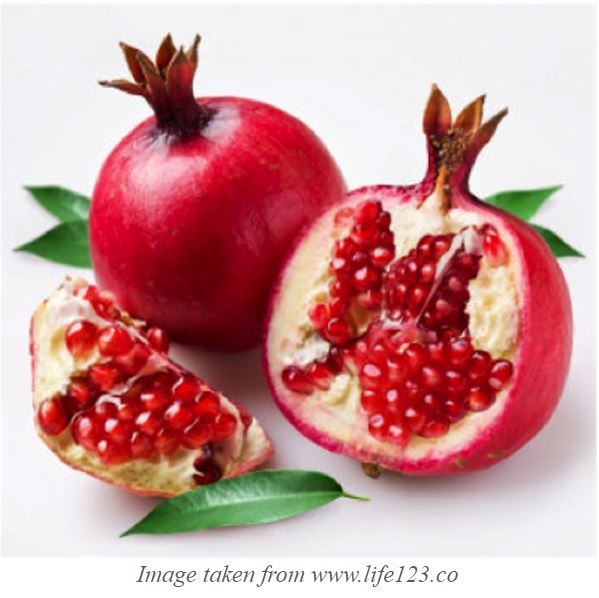Adcive for the Home Gardener From the Help Desk of the
UC Master Gardener Program of Contra Costa County
My questions are around best practices for fruit production. Should I fertilize the plant, and if so, with what and when? Should it have lots of water, little water, or none? Any advice will be welcomed
MGCC Help Desk Response: hank you for your inquiry to the UC Master Gardener Help Desk about how to get more fruit on your pomegranate bush.
There are a number of possible reasons why your bush is not producing more fruit:
- Pomegranates are self-pollinating, but do you have adequate pollinators in your garden? Growing a variety of flowering herbs and other plants that attract bees and hummingbirds can encourage their presence in your garden and enhance the ability of the pomegranate to self-pollinate. Also, planting another pomegranate bush may help.
- Is your bush getting at least 6 hours of bright sunlight a day? Shading of the bush by other trees, fences or buildings may reduce fruit production.
- Do you have the right cultivar for your area? Some cultivars are ornamental only. Here is a link to suggested cultivars: http://homeorchard.ucdavis.edu/plant_pomegranate.pdf
- Is your bush getting enough water or too much water? Although pomegranates are drought tolerant, they do require irrigation. Good drainage is important in order to prevent root rot. Mulch will help to retain moisture.
- Do you fertilize your bush? Fertilizing your shrub in March and July will help with fruit production. Excessive nitrogen should be avoided.
- Have you pruned your bush too severely? Do you remove suckers that grow from the root area? The suckers drain energy from the plant.
- Netting the bush can help to discourage squirrels from taking the fruit. The fruits ripen in 6-7 months and should be cut from the branch and not pulled off--to prevent damage to the plant.
- Since you mentioned that the bush drops its flowers in the spring, there is most likely some cause for the flowers dropping at that time as well. Besides wind and/or frost, the flower drop could be moisture stress because of the lack of rain earlier. (Not an issue this year!) Checking the moisture level of your soil at flowering time would be beneficial. Using a soil probe to check the moisture or just digging down 6 to 12 inches and checking how moist the soil is by hand are the best methods. The following website will explain how to check moisture content by look and feel. http://www.cdpr.ca.gov/docs/county/training/inspprcd/handouts/soil_moist_feel_test.pdf
- Mulching your tree will also help with moisture issues. Placing 2 to 4 inches of mulch throughout the root zone of your tree is appropriate, but also provide 12" of clearance around the trunk.
Here are some links that provide more information about growing pomegranates that may be helpful:
http://www.crfg.org/pubs/ff/pomegranate.html
http://homeorchard.ucanr.edu/Fruits_&_Nuts/Pomegranate/
http://ipm.ucanr.edu/PMG/GARDEN/PLANTS/pomegranate.html
These links will give you more specific information about the questions listed above.
I hope this information is helpful and let us know if you have any further questions. Good luck!
Help Desk of the UC Master Gardener Program of Contra Costa County (EKP)
Note: The UC Master Gardeners Program of Contra Costa's Help Desk is available year-round to answer your gardening questions. Except for a few holidays, we're open every week, Monday through Thursday for walk-ins from 9:00 am to Noon at 75 Santa Barbara Road, 2d Floor, Pleasant Hill, CA 94523. We can also be reached via telephone: (925) 646-6586, email: ccmg@ucanr.edu, or on the web at http://ccmg.ucanr.edu/Ask_Us/ MGCC Blogs can be found at http://ccmg.ucanr.edu/HortCoCo/ You can also subscribe to the Blog (//ucanr.edu/blogs/CCMGBlog/).